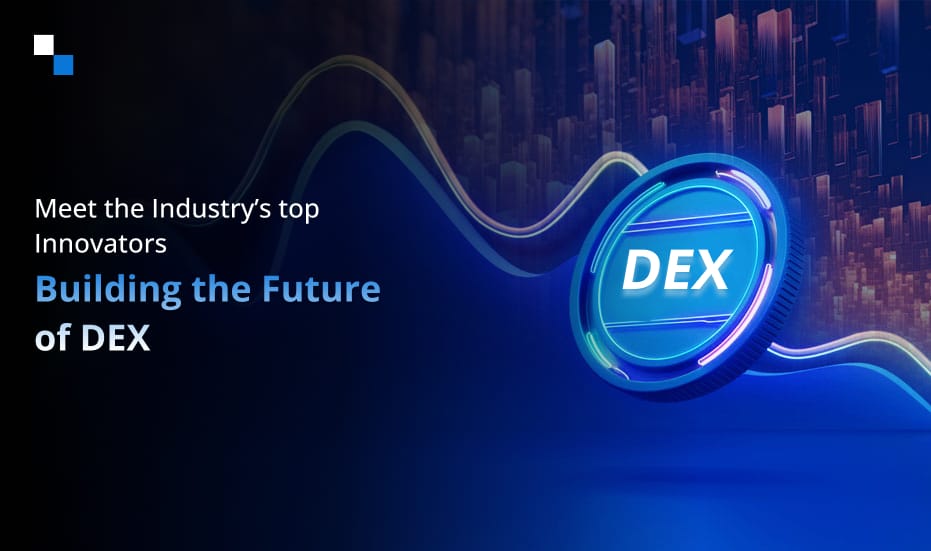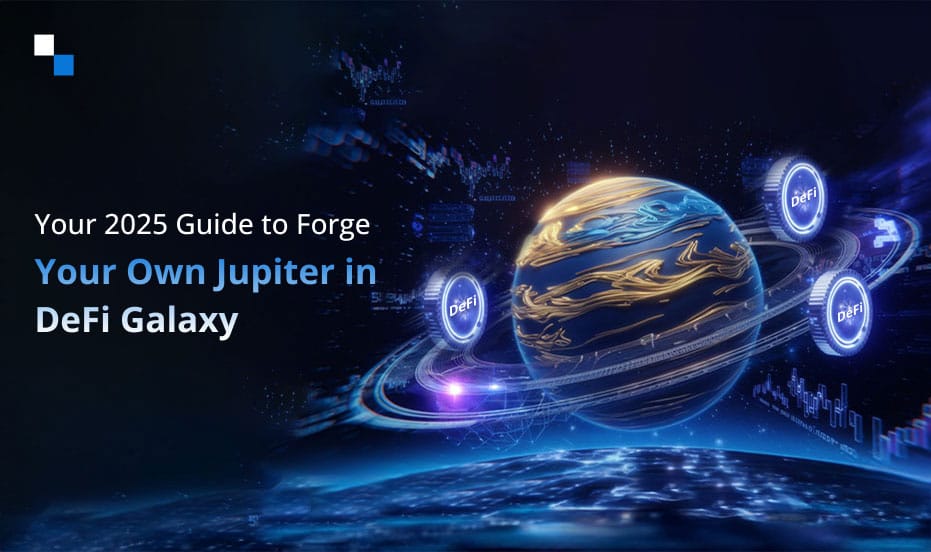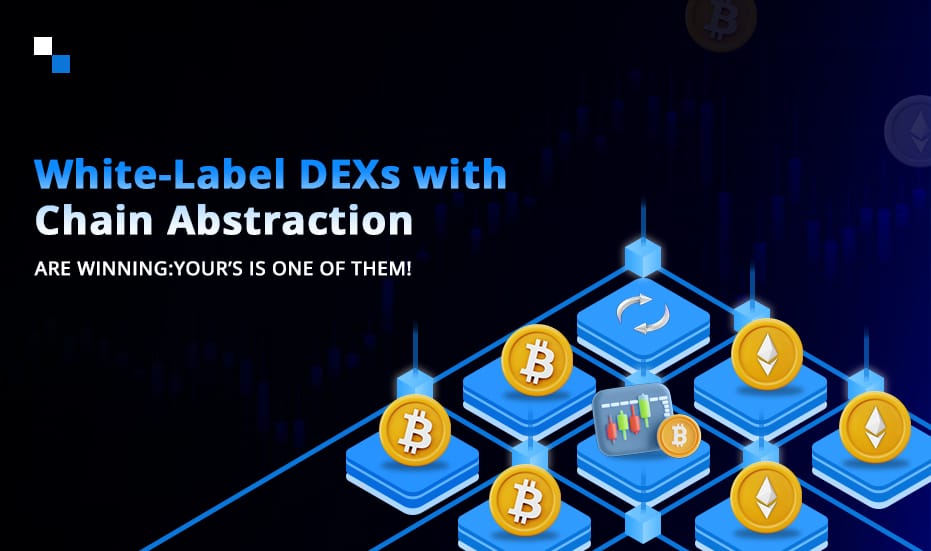Table of Contents
- Introduction
- Understanding Gas-Less Transactions on Decentralized Exchange Software
- The Technology Behind Gas-Less Transactions On Decentralized Exchange Software
- The Potential Impact of Gas-Less Transactions on DeFi Landscape
- Business Benefits of Integrating Layer 2 Protocols for a Gas-Less Experience
- Challenges and Considerations For Gas-Less DEX Development
- The Road Ahead
Introduction
Over the past few years, decentralized exchanges (DEXs) have evolved into a robust competitor to cumbersome centralized trading systems that lacked transparency and user control. With their aim to enhance user experience and accessibility, they are pulling a larger market share from their ancestral counterparts.
PancakeSwap, being a prominent decentralized crypto exchange software, has taken a significant step towards enhancing the user experience by picking the prickiest thorn out of the cryptocurrency landscape – gas fees. In this blog, we will study the impact of gas-free transactions powered by ZyFi, a layer 2 scaling solution integration, on the overall DeFi landscape.
Understanding Gas-Less Transactions on Decentralized Exchange Software
Conventionally, users on a blockchain network like Ethereum (on which the majority decentralized exchange software solutions operate) had to pay gas fees to execute transactions. These fees compensate miners or validators for processing and verifying transactions on the network. However, gas fees can fluctuate significantly and sometimes reach exorbitant levels, especially during periods of high network congestion.
“Gasless transactions,” on the other hand, eliminate the need for users to pay gas fees directly on decentralized crypto exchange software. This is achieved through various Layer 2 scaling solutions, like ZyFi in the case of PancakeSwap. These solutions essentially “bundle” multiple transactions off-chain, process them efficiently, and then submit them back to the main blockchain for final settlement. This process significantly reduces the computational burden on the main network, allowing for faster and cheaper transactions.

The Technology Behind Gas-Less Transactions On Decentralized Exchange Software
Before we examine the impact of gas-less transactions on the future of decentralized cryptocurrency exchange development, understanding the technical magic behind them is essential. Here’s a simplified breakdown of the technology powering this ground-breaking innovation:
Layer 2 Scaling Solutions:
Highly congested blockchain networks, a widespread phenomenon in the realm of blockchain, are like a highway clogged with cars. Like cars, all transactions try to reach their destination, i.e., settlement. The network congestion leads to high gas fees, deteriorating the user experience of decentralized crypto exchange software solutions.
Gas-less transactions utilize Layer 2 scaling solutions as alternative, efficient lanes to bypass the traffic jam. These Layer 2 solutions operate “off-chain,” meaning they process transactions outside the main blockchain. Here’s a simplified breakdown of the process:
1. Transaction Bundling: Many transactions are grouped and brought off-chain by the Layer 2 solution integrated with Decentralized Exchange Software. (like ZyFi in PancakeSwap’s case).
2. Off-chain Processing: These bundled transactions are then processed efficiently using various techniques, like state channels or rollups.
3. Mainchain Settlement: Finally, the Layer 2 solution periodically submits a single transaction representing all the bundled transactions back to the main blockchain for final settlement. This single transaction incurs a much lower gas fee as compared to processing each transaction individually, significantly lowering the gas fee on decentralized crypto exchange software.
As per the explanation, it is clear that the gas fees are lowered considerably but who is paying those low fees if users are not in the zero gas-fee transaction models? PancakeSwap reveals that the zkSync team will fund gas fees worth $5000 for traders using “zkSync Era PancakeSwap” on a first-come, first-served basis.
Here are a few ways decentralized exchange software can enable zero-gas fees for users:
1. Subsidization Model: It involves subsidizing mainchain gas fees for a limited time or specific trading pairs. This can be a strategic move to attract new users and bolster trading activity on decentralized exchange software.
2. Transaction Fee Rebates: Another model could introduce a slightly higher transaction fee for each trade on the decentralized crypto exchange software. A portion of these add-on fees can be used to cover the mainchain gas fees for bundled-up transactions, effectively providing a gas-free experience.
3. Third-Party Sponsors: A DEX may partner with some blockchain project or other entities willing to sponsor gas fees for specific trading pairs or activities. Whatever the benefit to sponsors in this bargain, decentralized exchange software can gain a competitive edge by offering a gas-free experience.
By understanding the technology behind gas-less transactions, we can learn what to expect from the innovation it brings to the DEX landscape.
The Potential Impact of Gas-Less Transactions on DeFi Landscape
Whether we talk about new DEX development projects or existing DeFi players, the game-changer integration of Zyfi with PancakeSwap has a long-lasting impact. Cryptocurrency traders have long suffered from expensive transactions due to gas fees and PancakeSwap just offered a glimmer of hope, promising a smoother and more accessible user experience. This will not only enhance the user base of PancakeSwap but will also set a trend for all other DEXs, potentially changing the implications of Decentralized Cryptocurrency Exchange Development for newcomers as well as existing players.
Let us now discuss the impact of “gas-less technology” on the future of decentralized exchange software platforms.

Business Benefits of Integrating Layer 2 Protocols for a Gas-Less Experience:
High gas fees can stifle participation, particularly for smaller transactions, and create a barrier to entry for new users. These fees can be especially cumbersome, potentially hindering the accessibility and user-centricity that DEXs aim to achieve.
- Increased User Adoption: By eliminating gas fees with Layer 2 protocol integration, decentralized cryptocurrency exchange software solutions become more accessible to a wider audience, particularly for smaller transactions. This could lead to a surge in user adoption and participation.
- Greater Scalability: Layer 2 protocols potentially eliminate scalability limitations, strengthening the non-custodial trading experience. By reducing the load on the main blockchain, decentralized exchange software solutions can handle a higher volume of transactions efficiently, paving the way for greater scalability.
- Simplified User Experience: Traditionally, DeFi users needed to acquire Ether (ETH) to pay for gas fees, adding complexity and cost to transactions. PancakeSwap’s integration with Zyfi eliminates this barrier by allowing users to pay gas fees using over 10 different ERC-20 tokens. This innovation not only simplifies the trading process on decentralized cryptocurrency exchange software but also makes it more cost-effective and user-friendly.
- Enhanced Cost-Effectiveness: Frictionless transactions with no gas fees create a smoother and more user-friendly experience for everyone. This can attract new users who might have been discouraged by the complexities and costs associated with traditional DEX transactions.
- Competitive Advantage: Decentralized cryptocurrency exchange software solutions implementing gas-less transactions could gain a significant competitive advantage by offering a more user-friendly and cost-effective trading platform.
- Reduced Network Load: By processing transactions off-chain, Layer 2 solutions significantly reduce the burden on the main blockchain, leading to faster and cheaper transactions.

Challenges and Considerations For Gas-Less DEX Development
While gas-less transactions are a promising development, there are still some challenges to consider for Decentralized Cryptocurrency Exchange Development.
1. Security: Layer 2 solutions introduce additional complexity, and ensuring the security of user funds across both layers is crucial. DEXs integrating gas-less transactions need to prioritize robust security measures. It may include:
- Secure communication channels between the Layer 2 solution and the main blockchain.
- User education for potential security risks associated with Layer 2 solutions.
- Smart contract audits to ensure the integrity of the Layer 2 protocol and decentralized cryptocurrency exchange software.
2. Centralization Concerns: Some argue that Layer 2 solutions might introduce a degree of centralization, potentially undermining the core principles of decentralization that DEXs champion.
While Layer 2 solutions offer efficiency, security remains paramount. DEXs implementing gas-less transactions need to prioritize robust security measures throughout the process. By partnering with a reliable decentralized cryptocurrency exchange development company, security concerns can be mitigated.
The Road Ahead
The integration of gas-less transactions on PancakeSwap marks a significant milestone in DEX development. This move promises to simplify DeFi trading, attract more users, and potentially challenge centralized exchanges (CEXs) for market share. It paves the way for a future where DEXs are not only accessible but also highly scalable and user-friendly.
As technology evolves and challenges are overcome, gas-less transactions have the potential to become the norm in the DeFi landscape, ushering in a new era of decentralized trading. If you’re an entrepreneur planning DEX aggregator or exchange development with Layer 2 integration, Antier can be your tech ally. Harness their 8+ years of blockchain experience to build a powerful DEX.
Share your requirements today!




